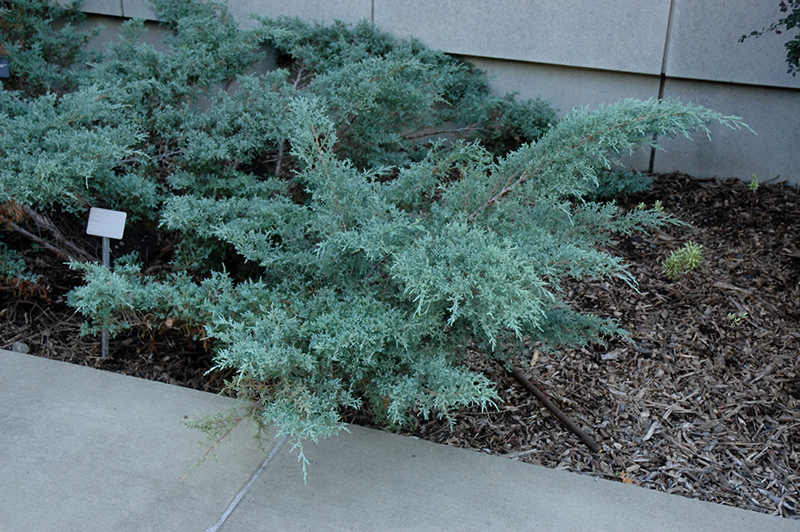Angelica Blue Juniper
Juniperus x media 'Angelica Blue'
Height: 5 feet
Spread: 10 feet
Sunlight:
![]()
Hardiness Zone: 4a
Other Names: Pfitzer Juniper
Description:
An incredibly colorful and stylish evergreen shrub, featuring spreading steel blue foliage with arching bright blue tips; the branching habit is stunning, the vivid color makes this shrub a standout in the garden; best time to prune is Nov-Mar
Ornamental Features
Angelica Blue Juniper is a dwarf conifer which is primarily valued in the landscape or garden for its broadly spreading habit of growth. It has attractive powder blue-tipped steel blue foliage. The scale-like sprays of foliage are highly ornamental and turn plum purple in the fall, which persists throughout the winter.
Landscape Attributes
Angelica Blue Juniper is a multi-stemmed evergreen shrub with a ground-hugging habit of growth. It lends an extremely fine and delicate texture to the landscape composition which can make it a great accent feature on this basis alone.
This is a relatively low maintenance shrub, and is best pruned in late winter once the threat of extreme cold has passed. Deer don't particularly care for this plant and will usually leave it alone in favor of tastier treats. It has no significant negative characteristics.
Angelica Blue Juniper is recommended for the following landscape applications;
- Accent
- Mass Planting
- General Garden Use
- Groundcover
Planting & Growing
Angelica Blue Juniper will grow to be about 5 feet tall at maturity, with a spread of 10 feet. It tends to fill out right to the ground and therefore doesn't necessarily require facer plants in front, and is suitable for planting under power lines. It grows at a slow rate, and under ideal conditions can be expected to live for approximately 30 years.
This shrub should only be grown in full sunlight. It is very adaptable to both dry and moist growing conditions, but will not tolerate any standing water. It is not particular as to soil type or pH. It is highly tolerant of urban pollution and will even thrive in inner city environments. This particular variety is an interspecific hybrid.


